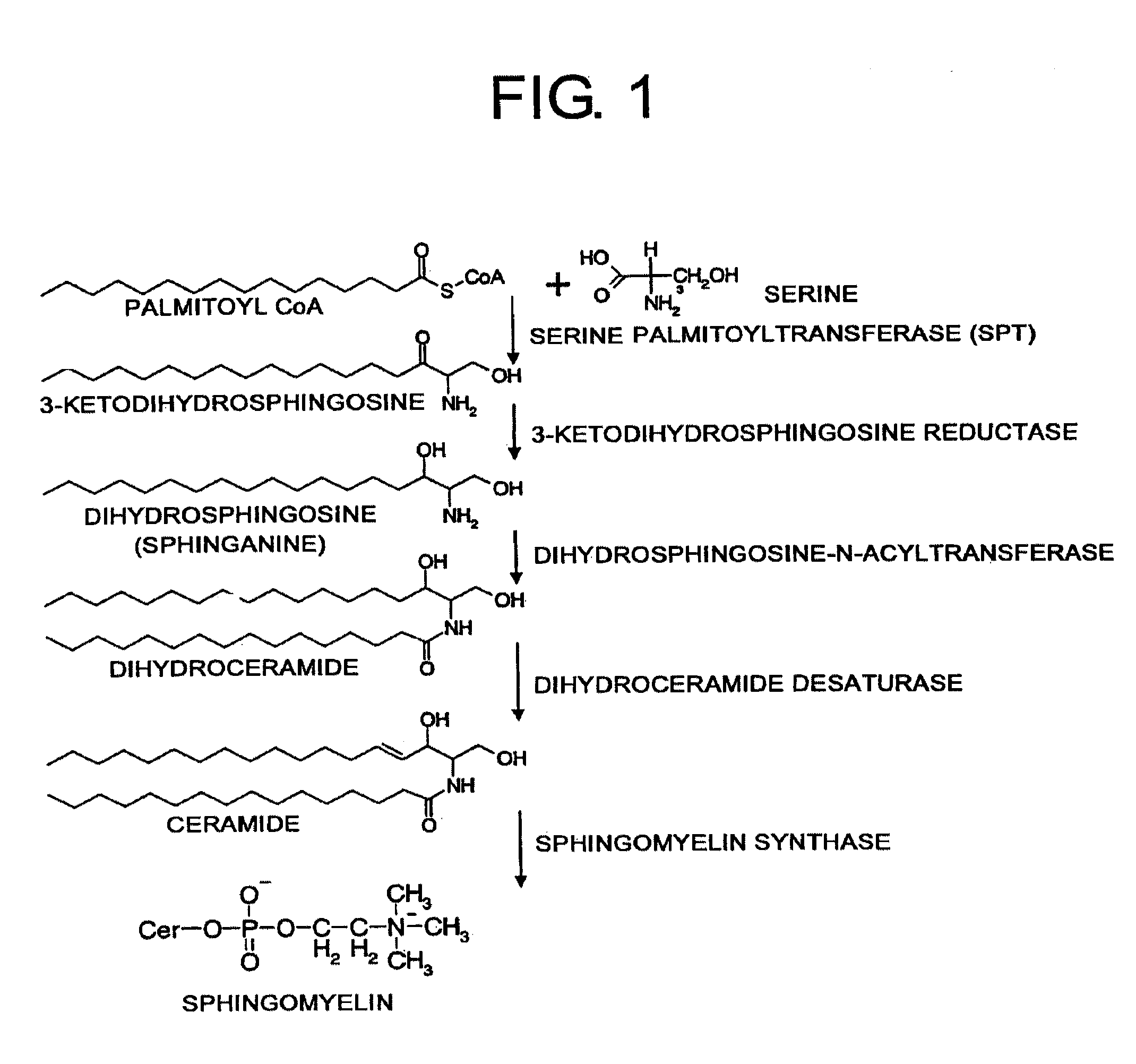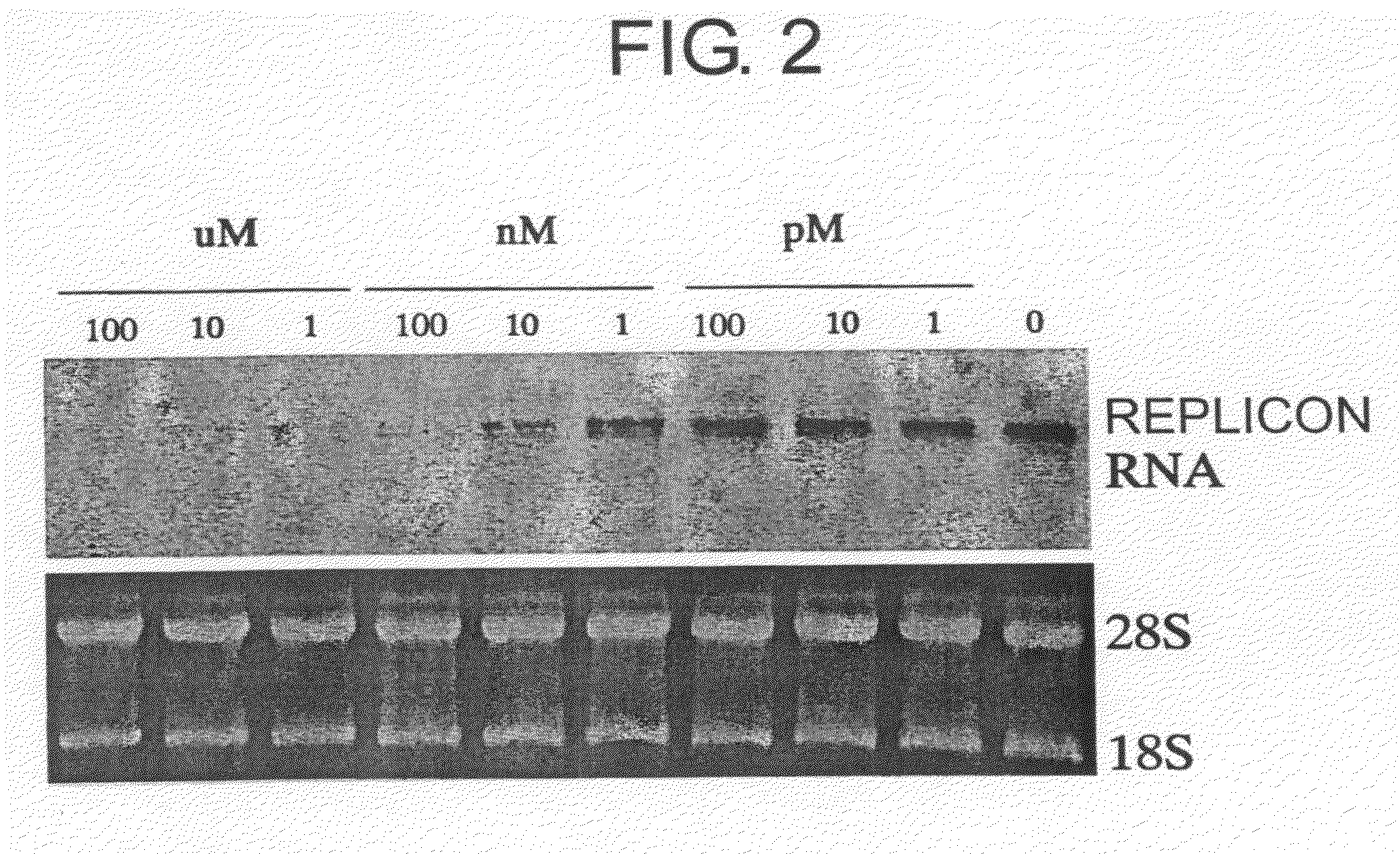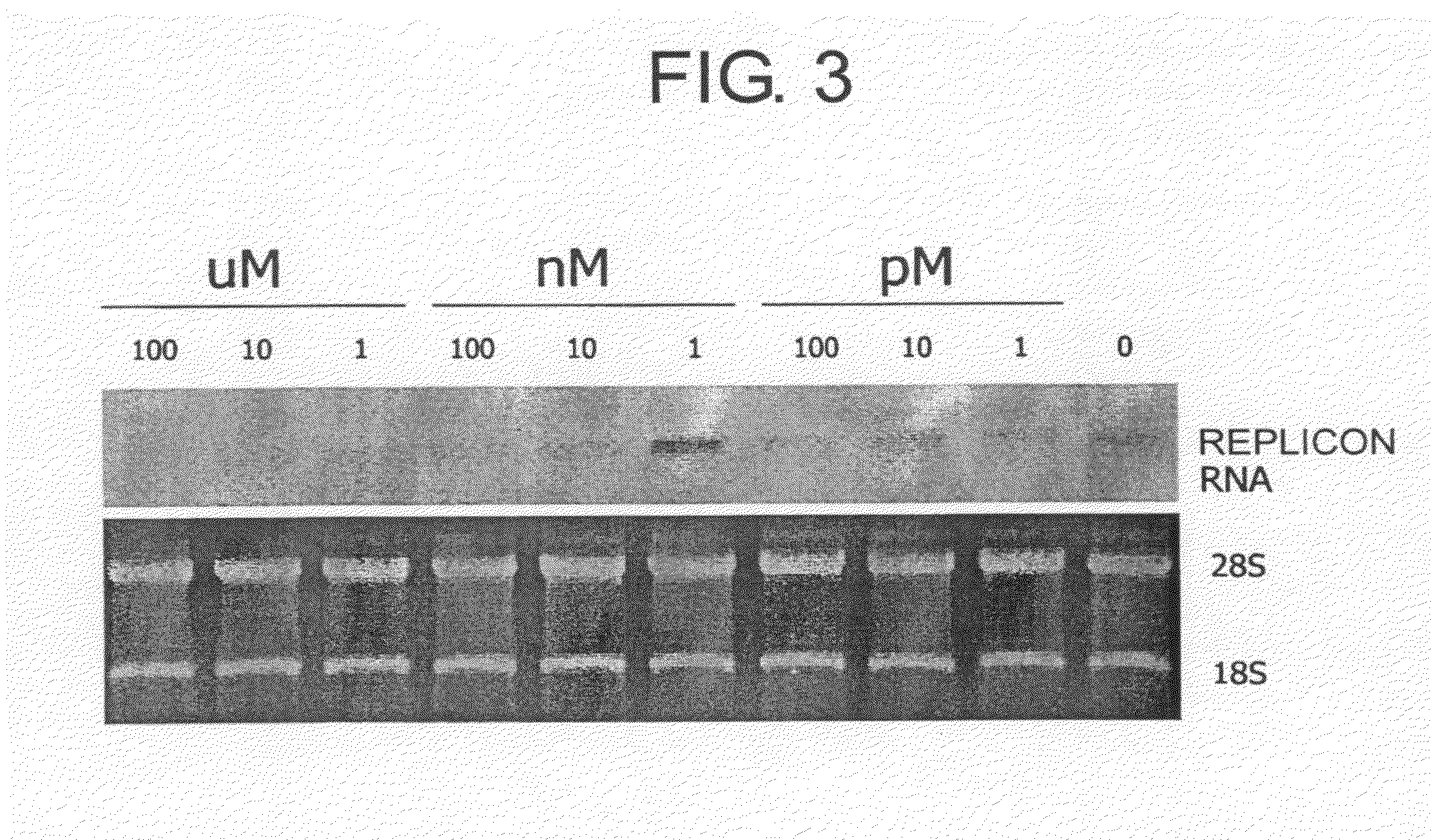Pharmaceutical agents for treating HCV infections
a technology for hcv infections and pharmaceutical agents, applied in the direction of acyltransferases, drug compositions, enzymology, etc., can solve the problems of the behavior of these compounds when used as pharmaceutical agents, and achieve the effects of suppressing lcb1 expression, strong inhibitory effect, and reducing lcb1 expression
- Summary
- Abstract
- Description
- Claims
- Application Information
AI Technical Summary
Benefits of technology
Problems solved by technology
Method used
Image
Examples
example 1
Measurement by Northern Blot Analysis of the Activity of Myriocin or the Compound Represented by Formula (II), which is Derived from Microorganisms Such as Those of the Genus Aureobasidium, in Inhibiting HCV RNA Replication
[0291]Between 1 pM and 100 μM of myriocin or the compound represented by the following formula (II) was added to Huh-3-1 replicon cells, and the cells were cultured under 5% CO2 at 37° C.
[0292]
[0293]Cells were collected 72 hours later, total RNAs were extracted, and this was subjected to Northern blot analysis using a neomycin resistance gene as a probe according to the NorthernMax Kit method, available from Ambion.
[0294]The following were used for the Northern analysis: specifically, NorthernMax Transfer Buffer (Ambion #8672), BrightStar-Plus Transfer Membrane (Ambion #10100), blotting paper (Sigma P-6664), and ULTRAhyb (Ambion #8670). The probes were labeled with biotin using a BrightStar Psoralen-Biotin Kit (Ambion #9860G3). High Stringency Buffer (Amibion #867...
example 2
Measurement by Western Blot Analysis of the Inhibition of HCV Protein Synthesis by Myriocin or the Compound Represented by Formula (II)
[0297]Western analysis was performed by the following method: Between 1 pM and 100 μM of myriocin or the compound represented by formula (II) was added to Huh-3-1 replicon cells, and the cells were cultured under 5% CO2 at 37° C. After 72 hours, the culture medium was discarded, phosphate buffered saline (PBS) was added, and the cells were dislodged by pipetting and then collected by centrifugation. A lysis solution for phosphate (50 mM Tris-HCl (pH 7.5), 0.5% Triton, 3 mM EDTA, 150 mM NaCl, 12 mM glycerophosphate, 50 mM NaF, 1 mM Na3VO4, 0.5 mM PMSF, and 0.5 mM aporotinin) was added to the cells, the cells were disrupted by pipetting, and the supernatant was collected by high-speed centrifugation. A protein assay was carried out using Dye Reagent (Nacalai Tesque #074-27) (Bovine Gamma Globulin, Standard solution, BIO-RAD #500-0005). 5 μg of the obta...
example 3
Measurement of the Activity of Fumonisin B1 in Inhibiting the HCV Replicon
[0298]Fumonisin B1 specifically inhibits dihydrosphingosine-N-acyltransferase, which produces dihydroceramide from dihydrosphingosine midway through the process of sphingolipid biosynthesis. The activity of fumonisin B1 in inhibiting the HCV replicon was measured.
[0299]Firefly luciferase HCV replicon cells (Huh-3-1) suspended in Dulbecco's MEM (Gibco Cat. No. 10569) containing 5% fetal bovine serum (Hyclone Cat. No. SH30071.03) were plated onto a 96-well plate at 5000 cells / well, and cultured overnight under 5% CO2 at 37° C. Approximately 20 hours later, fumonisin B1 was added to a final concentration of 1.37 μM to 1000 μM by carrying out a sequential three-fold dilution, and the cells were then cultured for three more days. The assay was carried out by preparing two types of assay plates: one an opaque white plate and the other a transparent plate. After culturing, the white plate was subjected to the Steady-...
PUM
| Property | Measurement | Unit |
|---|---|---|
| temperature | aaaaa | aaaaa |
| temperature | aaaaa | aaaaa |
| temperature | aaaaa | aaaaa |
Abstract
Description
Claims
Application Information
 Login to View More
Login to View More - R&D
- Intellectual Property
- Life Sciences
- Materials
- Tech Scout
- Unparalleled Data Quality
- Higher Quality Content
- 60% Fewer Hallucinations
Browse by: Latest US Patents, China's latest patents, Technical Efficacy Thesaurus, Application Domain, Technology Topic, Popular Technical Reports.
© 2025 PatSnap. All rights reserved.Legal|Privacy policy|Modern Slavery Act Transparency Statement|Sitemap|About US| Contact US: help@patsnap.com



